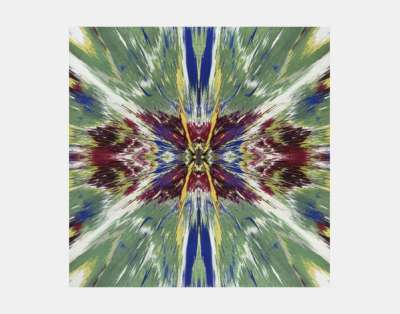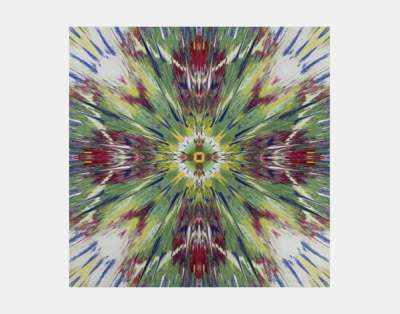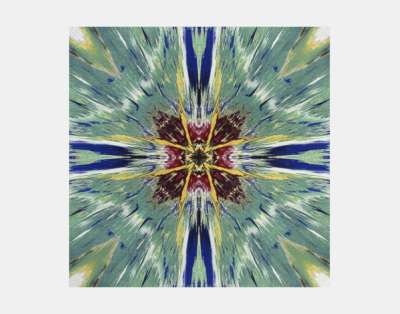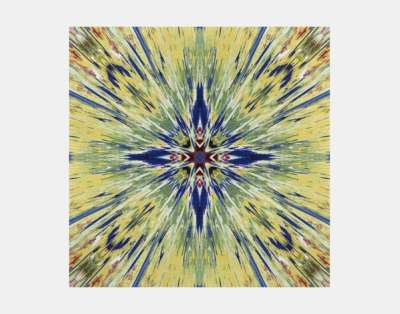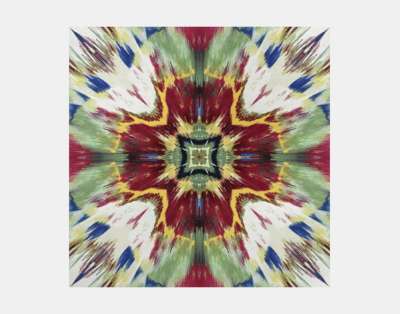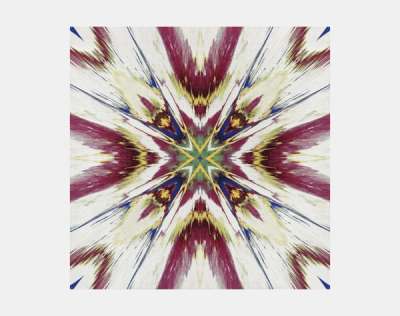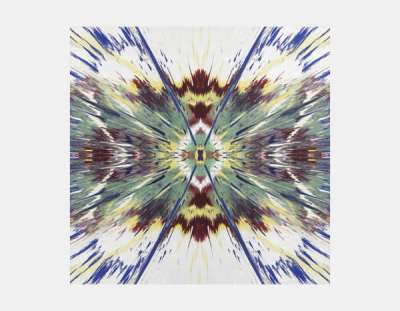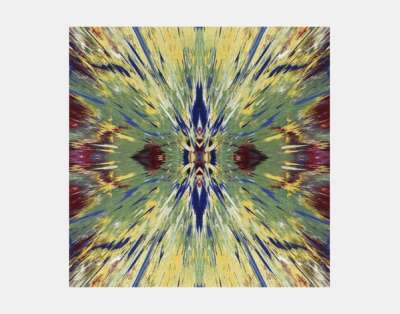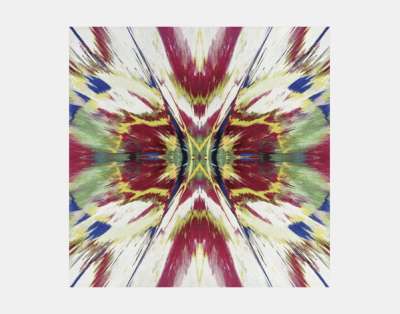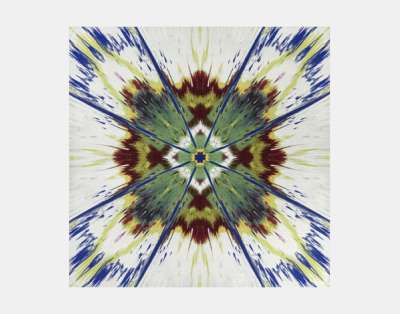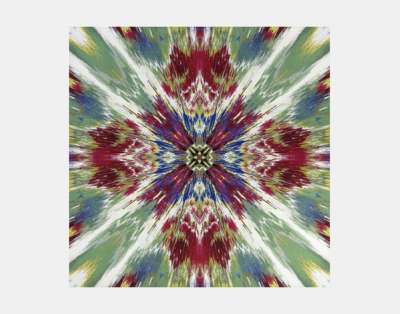
H1-7 Enter The Infinite - Being
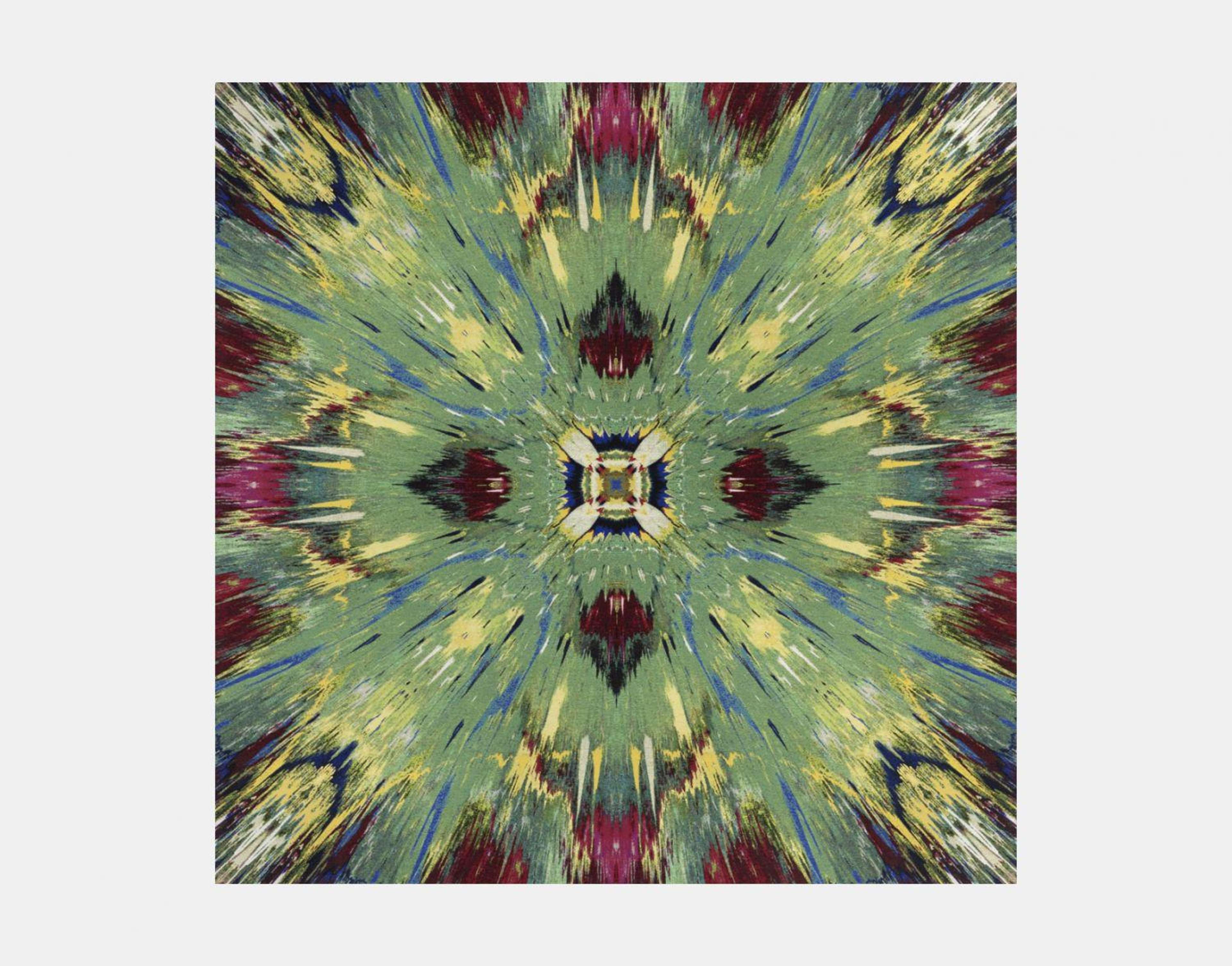
H1-7 Enter The Infinite - Being
Tapestry
Damien Hirst
Price data unavailable
AAGR (5 years) This estimate blends recent public auction records with our own private sale data and network demand.
There aren't enough data points on this work for a comprehensive result. Please speak to a specialist by making an enquiry.
Medium: Tapestry
Edition size: 20
Year: 2016
Size: H 25cm x W 25cm
Signed: No
Format: Tapestry
Track this artwork in realtime
Watch artwork, manage valuations, track your portfolio and return against your collection
Meaning & Analysis
H1-7 Enter The Infinite - Being is a Jacquard-woven tapestry produced by contemporary artist Damien Hirst in 2016. The square tapestry comes in a limited edition size of 20 and depicts a captivating pattern composed of red, yellow, blue and green thread. Green dominates the composition and the complementary red and yellow detailing brings a regal quality to the tapestry.
The tapestry was made using a Jacquard loom which was invented in 1804 by French weaver Joseph-Marie Jacquard. Hirst’s use of the loom marks a departure from his use of screen printing and painting and distinguishes this collection from many of Hirst’s other artworks. The tapestry can be seen alongside eleven other tapestries that belong to Hirst’s Enter The Infinite collection. Each tapestry in this collection uses the same colour formula, however each pattern is unique and the balance of colours vary across the compositions.
The title of this tapestry carries strong spiritual and religious undertones and hints at questions of life and death. Religion, mortality, life and death are themes that Hirst often explores in his art, notably in his repeated use of skulls, insects and dead animals. While these tapestries don’t address these themes as overtly as some of Hirst’s other works, traces of these questions can be detected throughout the collection.
Damien Hirst, born in Bristol in 1965, is often hailed the enfant terrible of the contemporary art world. His provocative works challenge conventions and his conceptual brilliance spans installations, paintings, and sculptures, often exploring themes of mortality and the human experience. As a leading figure of the Young British Artists (YBA) movement in the late '80s, Hirst's work has dominated the British art scene for decades and has become renowned for being laced with controversy, thus shaping the dialogue of modern art.
